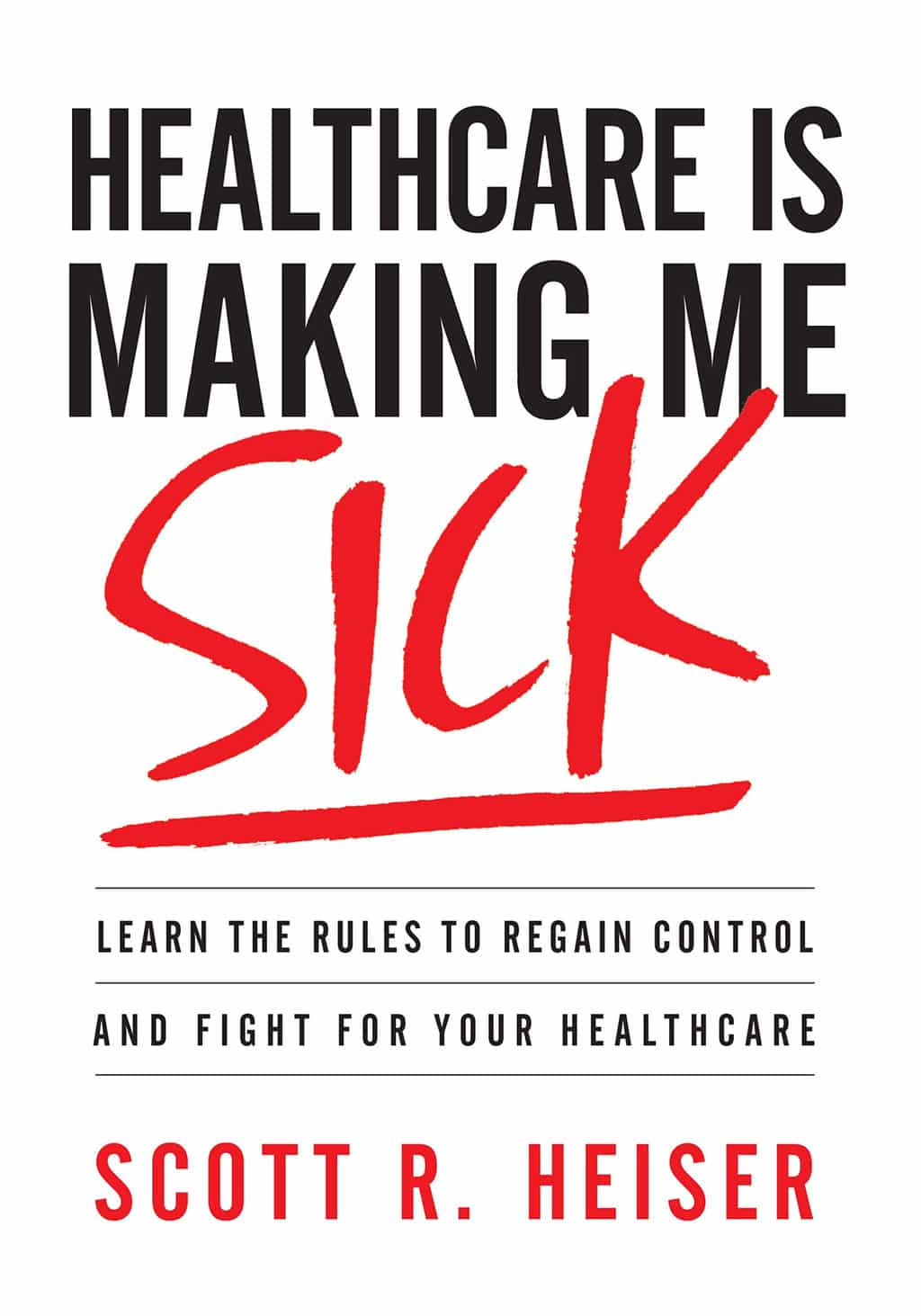What To Know About The 4 Basic Types Of Health Insurance Plans

Roughly 289 million people in America have some kind of health plan. That leaves about 9 percent of the population not covered, giving us a 91 percent coverage rate.
We get our health insurance from the following sources: we enroll in our employer-offered plans (or, as CEO, the plan we offer our employees), we directly purchase from insurance carriers ourselves, we qualify for and enroll in Medicaid, we turn sixty-five and enroll in Medicare, or we are employed through a government entity and receive one of their offerings.
Obamacare (ACA) has been successful in increasing the number of Americans with health insurance by subsidizing the cost through income-based subsidies for insurance and increasing participation in Medicaid. It has standardized the types of plans offered and removed previous barriers to purchasing insurance, like preexisting conditions. What it has not done is simplify or reduce the cost.
In this article, we’ll look at the four basic types of health insurance plans in more detail to help you gain a better understanding of what might be right for you.
Exploring the Different Plan Types
The current marketplace offers choices among these four basic plan structures: Preferred Provider Organization (PPO), Health Maintenance Organization (HMO), and High-Deductible Health Plans (HDHP), which can be coupled with a Health Savings Account (HSA) and Health Reimbursement Account plans. It’s important to understand the basic features and differences among plan types. Whatever source you have been provided to review benefits should clearly identify itself as one of these plan types. The plan types address what the plans cover (like what hospitals and doctors are available, whether doctor visits require referrals, and any tax savings opportunities) versus what you have to pay to participate in the plan (deductibles, copays, and out-of-pocket costs).
Let’s look at these four different plan structures in greater detail.
Preferred Provider Plans
PPOs are available in most geographic areas of the country in all three approaches: employer-sponsored plans, direct individual plans, and government plans. The name of the plan type “preferred provider” tells you about the key characteristic of the plan. PPOs grant you the freedom of choice to see any provider but create a network of physicians and hospitals (“in-network”) that offer discounted pricing to plan members.
The networks are generally broad but do not include all providers. The sample PPO plan shows two columns of benefits: In-Network Benefits and Out-of-Network Benefits. Note the doubling of the out-of-network deductibles and maximum out-of-pocket costs. This is to incentivize you to use the providers who are offering the network a discount. PPOs generally offer both deductibles and copays—charges you are required to pay. The PPO premiums tend to be higher than HMO plans.
Caution: Be aware of “balanced billing” if you go to out-of-network providers. Balanced billing means you’re responsible for charges above what the insurance company will cover, even if you’ve met your out-of-pocket maximum. If you are considering using an out-of-network provider, check with your plan on how it pays those providers.
Health Maintenance Organization
HMOs are available in all three approaches: employer-sponsored plans, direct individual plans, and government plans. Their goal, by managing the care and access to care, is to deliver better benefits at a lower premium than other plans.
Access to Care
HMOs offer a contracted network of physicians and medical providers that you may choose. There is no coverage for non-networked providers (except in emergencies). They limit their networks to select providers in exchange for deeper discounts on those providers’ services. This allows them to pass along reduced costs to you.
Note the following: HMO networks can be limited to certain geographic areas. If you travel or have family members living in different locations (e.g., college students), make sure the HMO network has providers where you are traveling. In addition, their networks are smaller. Make sure the doctors you are using now and the type of doctors you might need (refer to your health profile) are available in their network.
Managed Care
Some HMOs manage your care by requiring you to select a primary care physician (PCP) who determines what treatment you need. Referrals from the PCP to other service providers within the network may be required for the plan to pay benefits.
Benefits
As you can see in the HMO example, your out-of-pocket expenses are expressed in a copay for services versus deductibles. This allows you to know exactly what you will spend for each service, making it much easier to budget. Once your copays exceed the annual spending limit, the plan pays claims at 100 percent. Copay amounts will differ by plan. The higher the copay amounts, the lower the monthly premium.
In a nutshell, in exchange for having HMOs manage your care with a selective network of healthcare providers, you are offered lower monthly premiums with lower out-of-pocket costs. Certainly, this idea is one worth investigating.
High-Deductible Health Plans with a Health Reimbursement Account
A Health Reimbursement Account’s (HRA) features are attached to a PPO plan. They are an IRS-approved, employer-funded account for you to pay out-of-pocket health expenses. Its most common use is when employers introduce a higher deductible health plan and establish an HRA account for employees who select it.
The account is used to offset out-of-pocket expenses, thus reducing the financial burden on the employee. The employer has sole discretion on how much it contributes, up to the maximum amount allowable. The deposited funds are generally available only for the plan year and, if not used, may not be rolled over to the following year. At the employer’s discretion, funds can be rolled over and accumulated if not used.
Your employer’s open enrollment material will clearly identify such a plan and its provisions in the material. If offered, it could be a viable way to entertain a higher deductible and coinsurance plan, which should reduce your monthly premium while softening the impact of a high deductible if claims materialize. You must remember that the money in the account is the employer’s money and not yours. You cannot take it with you in the event you leave that employer. The funds revert back to the employer.
So, HRAs are a good way to transition to a higher deductible plan and lower monthly premium costs, but they’re not a long-term healthcare personal savings vehicle.
High-Deductible Health Plans Qualified for Health Saving Accounts
High-Deductible Health Plans that qualify for a Health Savings Account are available through employer-based plans and the direct insurance market. Currently, government programs don’t offer this option, which is becoming more prevalent with 70 percent of large employers offering at least one HDHP exclusively or as an option in 2018.
A High-Deductible Health Plan follows all the features of a basic PPO with one exception: it cannot offer any copays for any level of service. The plans do not pay until deductibles are met; that includes physician office visits and prescription drugs. Deductibles must be at least $1,350 for an individual and $2,700 for a family.
Why would you consider such a plan? The first benefit is lower monthly premiums. The second is the opportunity to open a health savings account and save money on a before-tax basis. Qualified HDHPs are the only plans allowed to utilize health savings accounts. Unlike the HRA, the money you save is yours. It’s like a 401(k). The amounts can grow, be invested, and stay with you when you leave your employer or retire. The funds can be used for healthcare expenses and health insurance premiums.
What About Prescription Drugs?
All ACA-approved plans must cover prescription drugs. Different plans cover them at different levels, but there are universal prescription drug features to be familiar with.
A drug formulary is a list of drugs covered by your health plan. They include Food and Drug Administration-approved generic, brand-name, and specialty drugs. Plans generally offer different levels of copays for the different drug categories. Generally, generic drugs have the lowest copays and specialty drugs have the highest.
The following is adapted from Healthcare is Making Me Sick: Learn the Rules to Regain Control and Fight for Your Healthcare by Scott Heiser.
Have you read?
# How Brands Can Deliver the Experiences Customers Actually Want by Rhett Power.
# Amazing Yacht Charter Destinations in Asia.
# Top Grooming Tips for Women Entrepreneurs Under 30.
# Dressing Tips For Businessmen Above 60.
Bring the best of the CEOWORLD magazine's global journalism to audiences in the United States and around the world. - Add CEOWORLD magazine to your Google News feed.
Follow CEOWORLD magazine headlines on: Google News, LinkedIn, Twitter, and Facebook.
Copyright 2025 The CEOWORLD magazine. All rights reserved. This material (and any extract from it) must not be copied, redistributed or placed on any website, without CEOWORLD magazine' prior written consent. For media queries, please contact: info@ceoworld.biz









